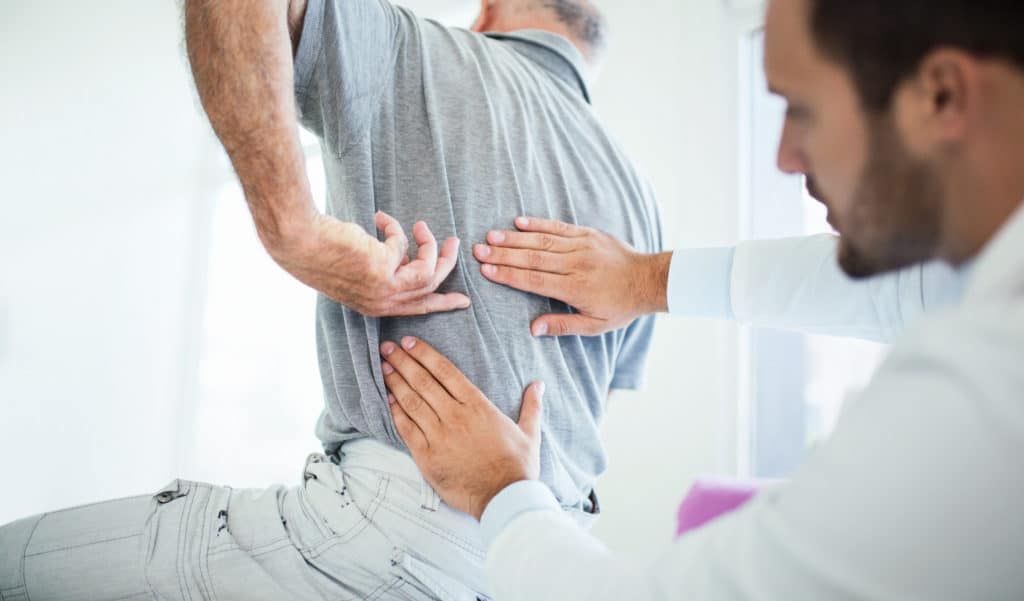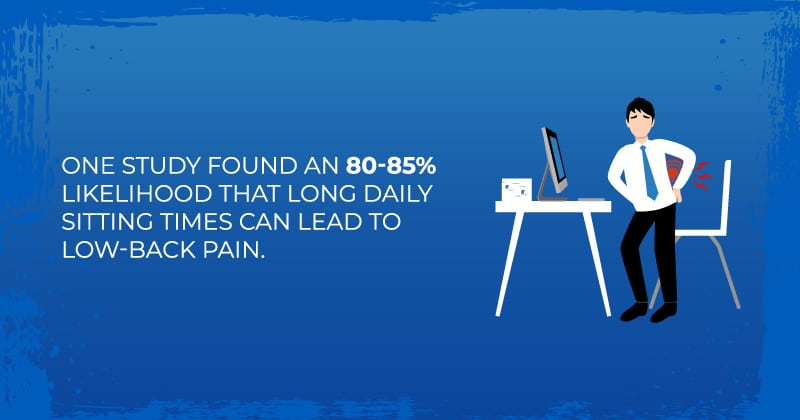

What Is Radicular Pain?
Uncover the underlying causes of radicular pain and explore a comprehensive range of treatment options at J. Flowers Health Institute’s specialized center.
Table of Contents
What Does Radicular Pain Feel Like?
Are you struggling with pain in the back, neck, hips, or legs and wondering what the cause could be? Radicular pain may be the answer.

Importance of Seeking Treatment
Getting the Help You Need at J. Flowers Health Institute
We’ll take you through a full diagnostic process to determine the type of pain, its cause, and the right treatment methods for your specific needs.
How is Radicular Pain Linked to Radicular Syndrome?
People with radicular pain will often have a back pain differential diagnosis of radicular syndrome, which is radicular pain caused by irritated or compressed nerves. Radicular symptoms may manifest due to a herniated disc or degenerative changes in the spine.
Radicular Pain vs. Radiculopathy: What’s the Difference?
For instance, an inflamed root in the neck may cause pain to radiate throughout the hand and arm. This type of pain is often associated with cervical pain patterns.
What is Radiculopathy?
Radicular pain and radiculopathy can occur independently or at the same time. Medical professionals tend to use the terms interchangeably. While they do have their differences, treatment methods tend to be the same.
Radicular Pain, Referred Pain, and Radiculopathy
Types of Radicular Pain
Lumbar Radicular Pain
The lumbar area consists of the vertebrae labeled one through five situated between the chest and the sacrum. The condition tends to manifest as pain, numbness, and weakness in the buttock and leg. It’s often caused by spinal nerve root compression.
Thoracic Radicular Pain
- Stenosis
- Bone spurs
- Disc herniation
- Other conditions
Cervical Radicular Pain
Causes of Radicular Pain
A variety of factors can cause radicular pain. Below are some that may be at the root of the condition.
Compressive or Inflammatory Condition
Bone Spurs
Spondylosis
- Dehydrated discs
- Bone spurs
- Herniated discs
- Stiff ligaments
Disc Herniation
Spondylolisthesis
What is Spondylosthesis?
Predisposing Factors to Radicular Pain
Smoking or Drug Use
Substance Use
These connections to pain and substances are why dual-diagnosis treatment is so important. At J. Flower’s Health Institute, we not only have the resources to treat pain, but we can also diagnose and treat any co-occurring substance use disorders.
Obesity or Sedentary Lifestyles
When someone sits at a desk for long periods of time with little intentional physical exercise, it creates postural support problems, such as a forward lean in the shoulders. Over time, this can lead to many issues with radicular pain.
Driving Often
Stress
Additionally, the mental symptoms of stress can cause or worsen symptoms of chronic pain. This is due to the fact that blood flow going to adrenal glands during times of stress affects the functions of the hippocampus and amygdala.
Mental Illness
The link between mental health and pain is once again why dual diagnosis treatment is necessary. We have resources that can help with both mental health and pain treatment at J. Flowers Health Institute.
Injuries
Additionally, bad falls or traumatic car accidents can lead to numerous forms of chronic pain, including radicular problems. Bone spurs growing on the vertebrae can also be a common issue.

Signs and Symptoms of Radicular Pain
Cervical Symptoms
- Neck Pain: The irritated nerve is located in the neck area, so this area is more likely to feel pain during neck movement or when keeping still.
- Pain That Radiates to the Arms and Hands: The nerves in the neck travel down to the arms and hands, so it’s not unusual to feel pain in these areas.
- Numbness in the Shoulders, Arms, Hands, and Fingers: Nerve pain is often linked to numbness in the affected area as well.
- Muscular Weakness: Muscular weakness is a common symptom of motor nerve damage.
- Pain That Radiates to the Shoulders and Chest: Even though the pain occurs in the neck area, it can also radiate to the shoulders and chest.
Thoracic Symptoms
One may experience the following types of discomfort:
- Chest Pain: Although the source of pain may be in the back, it is not uncommon to radiate out into the chest.
- Numbness or Tingling Sensations: Severe nerve pain is often associated with feelings of numbness and tingling.
- Tight Feeling in the Chest: The pain in the chest can cause tightness that may feel as if someone is dealing with cardiac arrest.
- Pain That Radiates to the Abdomen: Severe nerve pain may get into unlikely areas, such as the abdomen.
Lumbar Symptoms
- Lower Back Pain: Since pinched nerves and irritation are typically situated in the lower back, people will likely feel lumbar radicular pain.
- Pain the Radiates to the Legs and Feet: It’s not unusual to experience radicular leg pain along with lumbar symptoms. If someone has radiculopathy, the pain may radiate all the way to the feet.
- Numbness in Legs: Nerve damage often causes numbness that may be felt in the legs and lower back area.
- Muscular Weakness: Radicular nerve pain can result in muscular weakness, which can be experienced in any of the affected areas.
- Burning Pain in Hips: Radicular symptoms of lumbar radicular pain may include a burning sensation in the hips and lower back.
Lumbar Pain vs. Referred Pain
Screening and Diagnosis of Radicular Syndrome
Physical Exams and Physical Tests
A doctor may perform physical exams and tests to check muscle strength and reflexes. For example, if a patient experiences pain when moving a certain way, this will help identify the affected nerve root.
Imaging Tests
- X-Rays: X-rays are types of radiation that create pictures of the inside of the body.
- MRI: Magnetic resonance imaging (MRI) uses a magnetic field and computer-generated radio waves to form pictures of the anatomy.
- CT Scan: Computerized tomography, or CT scan, combines X-ray images taken from different angles around the body and uses a computer to form a detailed view of the anatomy.
- Electromyography: Electromyography measures the body’s muscle response or electrical activity when nerves are stimulated. It’s often combined with nerve conduction studies to pinpoint the issue.10

Treatment Options for Radicular Pain
Non-Surgical Treatment
Non-surgical treatment options can involve a variety of options depending on the primary source of the pain.
Dual Diagnosis Pain Treatment
Dual Diagnosis Treatment at J. Flowers Health Institute
- Medical evaluation
- Psychiatric evaluation
- Substance use disorder testing
- Brain mapping
- Comprehensive report and action plan
- Chronic pain evaluation
- Trauma assessments
Medications
At times when physical causes of the pain are the culprit, there are other medical solutions available, such as prescription medications. Prescription medication can sometimes be a useful tool while working toward a more permanent solution for ongoing pain.
Pain relievers, muscle relaxers, and anti-inflammatory medications can be used to reduce pain and inflammation associated with radicular pain patterns. Steroid and oral injections can also be helpful.
Physical Therapy
Traction
Surgical Treatment
In times where holistic solutions are not enough, such as serious injuries, there are several surgical options that may be able to help. Our team at J. Flowers Health Institute is able to refer you to the best surgical professionals if this level of treatment is required.
Discectomy
This surgery removes lumbar herniated disc material that’s pressing on the nerve root or spinal cord. It can also be done as a microdiscectomy, a less invasive method that uses a microscope to view the discs and nerves.
Laminectomy
Laser Debridement and Facet Thermal Ablation

Home Remedies for Radicular Pain
After a doctor makes a back pain differential diagnosis, they may recommend home remedies that can be used on their own or in conjunction with medical treatment to reduce radicular pain symptoms. These include:
Restless Bed Rest: This involves staying in bed while performing certain movements to keep the body active.
Avoid Twisting Movements: Any twisting movement that aggravates radicular pain symptoms should be avoided.
Quit Smoking: As stated above, smoking has been shown to be linked to an increased risk of radicular pain. Quitting smoking can decrease the likelihood of developing the condition and improve symptoms.
Limit Alcohol Consumption: Alcohol can also cause people to move in ways that will irritate their nerves, and they may not realize it until after sobering up. It also contributes to weight gain, putting added pressure on the back.
Maintain Pain-Free Posture: It’s important to maintain a posture that does not put pressure on the affected area. Traction may help people achieve the posture they need to heal.
Avoid Lifting or Pushing Heavy Objects: Lifting or pushing heavy objects will make the pain worse.
Follow Proper Rest After Injury: If you were injured, the affected area will be sensitive immediately after the injury. To make sure you don’t worsen your condition or exacerbate any existing pain, follow your doctor’s orders regarding bed rest.
How J. Flowers Health Institute Can Help
Our Treatment Approach
We take a holistic approach that treats the mind, body, and soul. We offer a combination of Western medicine, integrative nutrition, and sports medicine to ensure our clients achieve optimal health.
We provide comprehensive care that includes diagnosis, evaluation, treatment, and aftercare. Our “Living MRI” can help us figure out how to treat your symptoms holistically and comprehensively. We will work with you every step of the way to ensure that your radicular pain is lessened.
Contact J. Flowers Health Institute Today
Do not let radicular pain negatively affect another day of your life. Call J. Flowers Health Institute to get the help you need. We are here to help you enjoy a higher quality of life.
Resources
- https://www.ncbi.nlm.nih.gov/books/NBK546593/
- https://www.mayoclinic.org/diseases-conditions/bone-spurs/symptoms-causes/syc-20370212#:~:text=Bone%20spurs%20are%20bony%20projections,joint%20damage%20associated%20with%20osteoarthritis.
- https://pubmed.ncbi.nlm.nih.gov/26403480/
- https://nida.nih.gov/publications/research-reports/common-comorbidities-substance-use-disorders/part-2-co-occurring-substance-use-disorder-physical-comorbidities
- https://www.ncbi.nlm.nih.gov/pmc/articles/PMC4839843/
- https://www.ncbi.nlm.nih.gov/pmc/articles/PMC8767074/
- https://www.everydayhealth.com/back-pain/back-pain-while-driving.aspx#:~:text=A%20study%20published%20in%20May,than%20people%20who%20are%20not.
- https://www.ncbi.nlm.nih.gov/pmc/articles/PMC5546756/
- https://www.ncbi.nlm.nih.gov/books/NBK219250/
- https://www.hopkinsmedicine.org/health/treatment-tests-and-therapies/electromyography-emg#:~:text=Electromyography%20(EMG)%20measures%20muscle%20response,the%20skin%20into%20the%20muscle.





